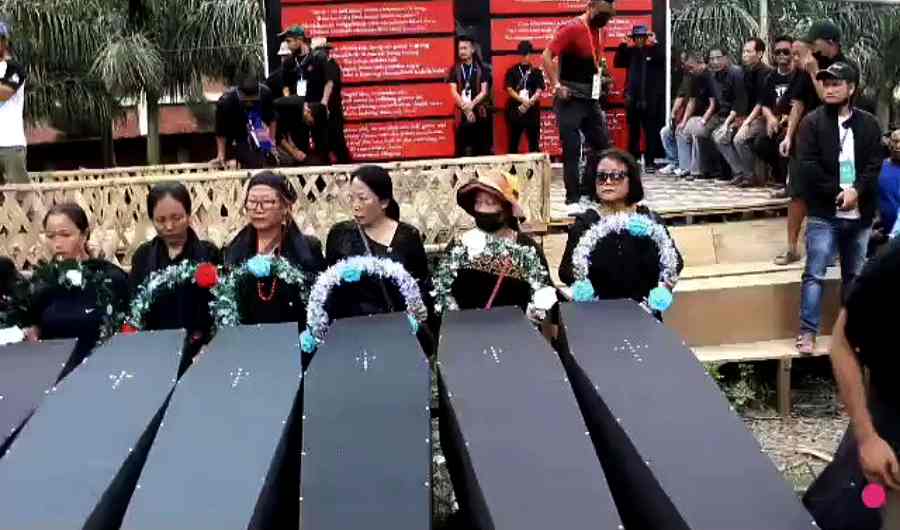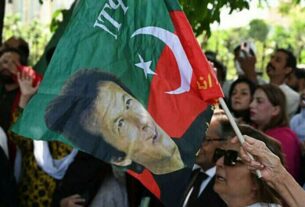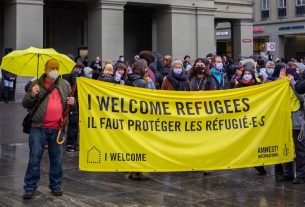![]() People laying make-believe coffins to rest during a protest in Manipur’s Churachandpur district last month.
People laying make-believe coffins to rest during a protest in Manipur’s Churachandpur district last month.
Thu 13 July 2023:
Clashes between Meitei and Kuki-Zo tribes continue even after two months, with over 140 dead and tens of thousands displaced.
Churachandpur, India – Bawla (name changed) and more than a dozen other residents of Langza village in India’s northeastern state of Manipur are keeping a watch as the sound of gunfire closes in on the group.
As the day breaks and they start moving to a vehicle to escape, Bawla hears a sport utility vehicle approaching them. They start to run away from it.
“I ran for a distance and hid myself when I found a nook,” he told Al Jazeera.
From where he was hiding, he heard some voices. “Don’t shoot, let’s capture him alive,” came a voice. Then he heard more gunshots.
Bawla stayed hidden for three hours, before escaping up the hill to Tuinning, a nearby village, where he was told his friend David Thiek had been beheaded.
Only hours ago, Thiek was running behind Bawla as they were being chased by the attackers in an SUV. Now his severed head was hung at the entrance of the Langza village and the rest of his body was burned.
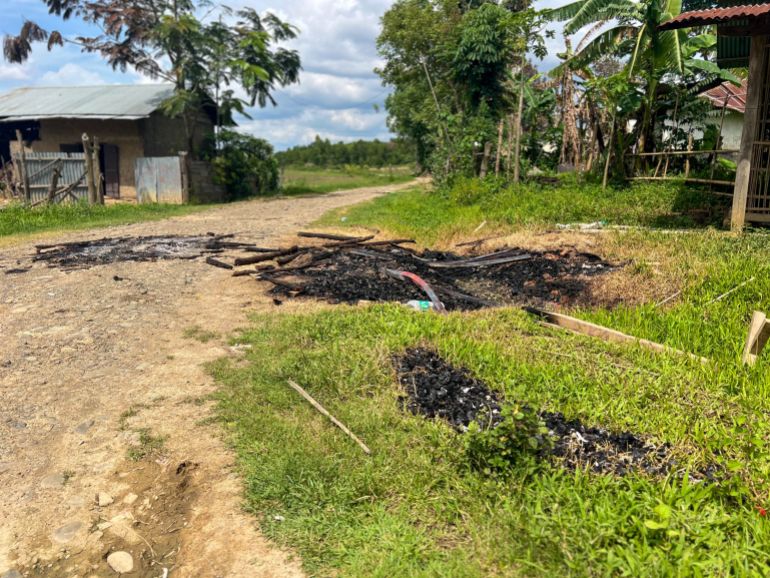
The entrance of Langza village where Thiek’s charred remains were found. Slightly ahead from here, his severed head was hung from a pole [Greeshma Kuthar/Al Jazeera]
The July 2 incident underscores the horrors still unfolding in Manipur, a remote Himalayan state where ethnic clashes between Meitei and Kuki-Zo tribes have killed more than 140 people and displaced more than 50,000 people in two months.
What caused the violence?
The mainly Hindu Meitis form a narrow majority among Manipur’s 3.5 million population, as per India’s last census conducted in 2011. The group is largely concentrated in the prosperous valley area around Imphal, the state capital, in central Manipur.
They also enjoy political dominance, with the state’s chief minister N Biren Singh of the right-wing Bharatiya Janata Party (BJP) himself being a Meitei as are the 40 legislators in the 60-member state assembly.
On the other hand, the minority Kuki-Zo tribe, along with the Nagas, are predominantly Christian and form about 40 percent of the state’s population. They mostly live in the hills around the valley.
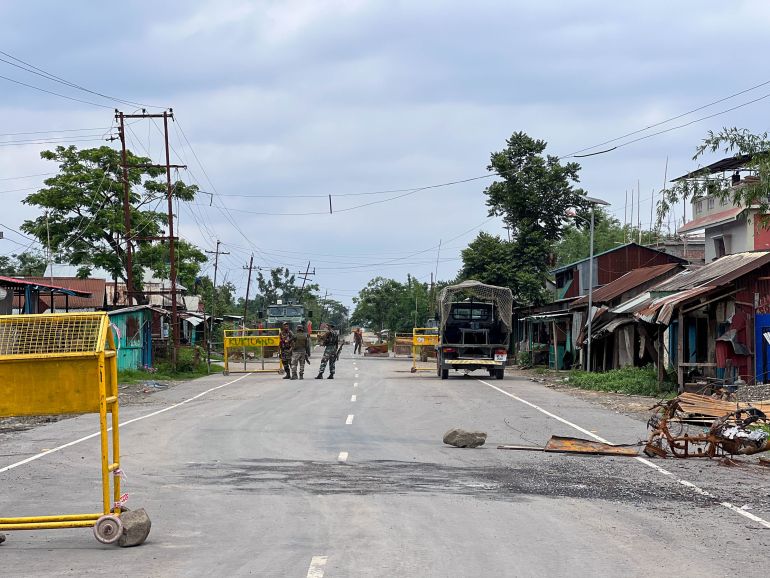
Indian security forces at Kangvai village in Manipur’s Churachandpur district [Greeshma Kuthar/Al Jazeera]
While clashes between the Meitei and Kuki-Zo tribes are not uncommon in ethnically-divided Manipur, few had predicted the scale and length of the latest riots, which some reports have even called a civil war.
The root of the latest violence lies in an order issued in March by a local court that said the Scheduled Tribe status granted to the Kuki-Zo and Nagas should also be extended to the majority Meiteis.
The Meiteis trace their origin to the region’s royalty and many of them enjoy government quotas under at least three other categories – Scheduled Caste, Other Backward Castes and Economically Weaker Section – all being the Indian government’s affirmative action programmes for the historically marginalised.
Yet, the Meiteis’ insistence on being classified as Scheduled Tribe has led to resistance from the Kuki-Zo and Naga tribes, triggering the ongoing violence.
On May 3, hours after the Kuki-Zos and the Nagas held a tribal solidarity march against the court’s proposal, an Anglo-Kuki War memorial gate was set on fire by the Meiteis in Churachandpur, one of the 10 hill districts of Manipur.
The memorial marks the 1917-19 war between the Kukis and the colonial British who ruled over India until 1947. One can still find centenary stones engraved with the words “In defence of our ancestral land and freedom” in most Kuki-Zo villages in the hill districts.
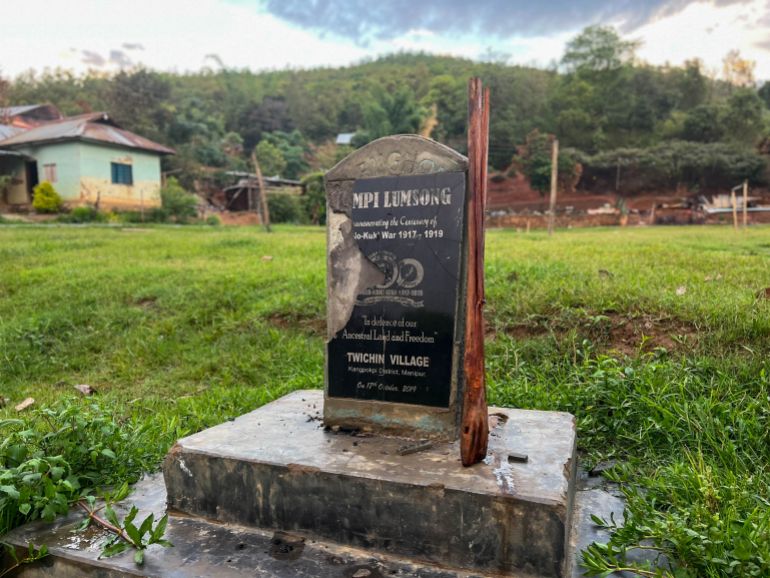
A 1917-1919 war memorial stone vandalised in Manipur’s Twichin village [Greeshma Kuthar/Al Jazeera].
The burning of the gate triggered clashes across Manipur as armed groups from both sides went on a rampage, attacking villages and burning homes.
‘They didn’t even spare churches’
In Langza village, where the July 2 beheading happened, another resident told Al Jazeera he was caught by five people belonging to a Meitei group.
“Three were wearing khaki, [who] looked like commandos. Two were in black,” he said, referring to a Meitei militia reportedly leading most attacks on Kuki villages.
“They found me and took me to a bigger crowd. When I reached there, they asked me for my ID card. But some people in the crowd recognised me as Kom and let me go,” he said, referring to a minor tribe.
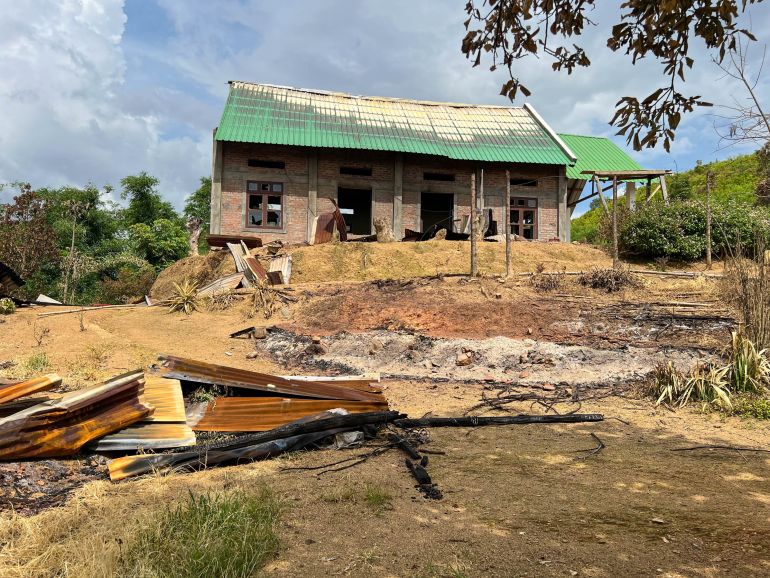
The Kom, who did not want to reveal his identity over security fears, said all the houses belonging to the Kuki-Zo tribe in Langza were burned to the ground in the attack.
“They didn’t even spare the churches,” Thang Lian Khup, a videographer by profession, told Al Jazeera. Khup was one of the first to visit Langza to retrieve the charred remains of Thiek.
The three churches in the village were stripped bare and burned down. Burned cemetery stones were found among the rubble, residents said.
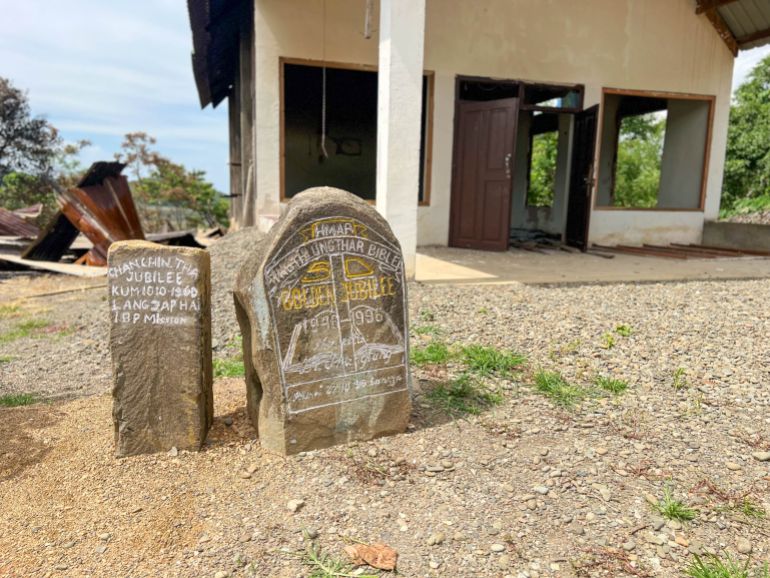
Another church that was ransacked in Manipur’s Langza village [Greeshma Kuthar/Al Jazeera]
The security forces deployed by the federal government in New Delhi after the onset of violence have attempted to maintain a buffer zone between Kuki-Zo and Meitei areas. These are the areas that have seen most attacks.
The carnage immediately reached Imphal, where properties of Kukis, including their churches, were torched. Many Kukis were lynched.
‘The state is attacking us’
Nearly all the Kukis, including legislators, have fled the Meitei-majority Imphal Valley and are forced to take refuge either outside Manipur or in the hill districts.
Meitei villages at the borders of the hill districts also faced retaliatory attacks. Many are in relief camps and want to return home.
“Kukis have a problem with the state government. They are opposed to the Scheduled Tribe demand of the Meiteis,” Robindo Singh, a Meitei displaced by the violence, told Al Jazeera.
“But why are they burning our houses? We are innocent,” he added. “I of course want to go home.”
Going back home seems close to impossible for now, with the boundary lines strongly drawn between the Kuki-Zo people in the hills and the Meiteis in Imphal Valley.
“Stories of our friends and family escaping from Imphal used to haunt us, but these days even such an ordeal seems trivial compared to what is unfolding,” David Haokip, 32, a teacher from the hill districts, told Al Jazeera.
“Even though we are in the middle of a war, we have war ethics. We don’t harm children, women or unarmed civilians because we have been taught by our ancestors that wars are lost if these rules are broken.”

Security forces patrolling Phaileng village in Manipur’s Kangpokpi district [Greeshma Kuthar/Al Jazeera]
It is customary for families belonging to Kuki-Zo tribes to use licensed single or double-barrel guns, which are now being used to guard villages.
“We have no other choice when the state is attacking us,” said Neinu, a leader of the Kuki Women’s Union.
Many in the Kuki-Zo community believe this violence was coming, with the hill districts having faced systematic neglect and discrimination, receiving far less budget allocations as opposed to the much smaller valley in terms of area.
“In the past few years, Biren Singh’s government has gone out of its way to target us, including trying to take away our land,” a Kuki-Zo government officer told Al Jazeera on condition of anonymity.
‘Dispute politically motivated’
Local media houses, most of which are Meitei-owned and based in the valley, blame the “Kuki militants” for the violence, exacerbating the crisis. Sangai Express, one of the state’s largest newspapers, is owned by a Meitei BJP legislator.
On June 21, nine Meitei legislators, most of them from the BJP, wrote to Prime Minister Narendra Modi, saying they have lost faith in the state government and that they wanted an immediate federal intervention and protection of central security forces.
The legislators withdrew their statement the next day, with many criticising the move as an indication of a lack of political will to solve the crisis.
But chief minister Singh says he is doing his best to maintain security in the state.
“We have lived as one and we will continue living as one,” he said during a news conference on July 3. “We are making efforts at all levels to restore peace. Our priority is to restore peace and normalcy in Manipur.”
On Monday, India’s Supreme Court, in response to a status report filed by the Manipur government over the ethnic violence, said it “cannot run law and order in the state”.
“Give us some positive suggestions by Tuesday to make the situation better and we will ask the centre [federal government] and the Manipur government to look into it,” the top court said.
Sujatha Surepally, professor of sociology at Satavahana University in the southern Telangana state, told Al Jazeera the “highest court of law in India refusing to interfere in this ethnic violence affecting the lives of indigenous people is shameful”.
“It has been more than two months and the BJP government is yet to intervene and stop this violence which has claimed many lives,” she said.
“The rest of India is uninformed about what is really happening in Manipur though this is a national issue. It is being projected as a dispute between two communities but it seems to be politically motivated.”
By | SOURCE: AL JAZEERA
______________________________________________________________
FOLLOW INDEPENDENT PRESS:
TWITTER (CLICK HERE)
https://twitter.com/IpIndependent
FACEBOOK (CLICK HERE)
https://web.facebook.com/ipindependent
Think your friends would be interested? Share this story!


